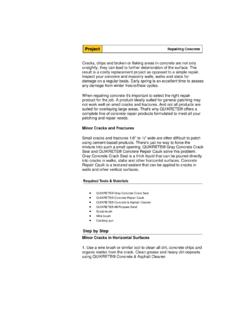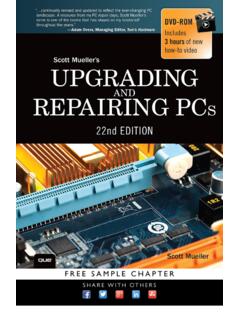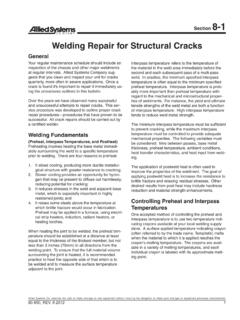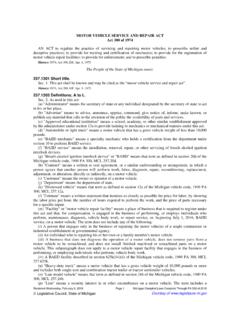Transcription of Repairing Sunken Brick or Stone Walks and Patios
1 Repairing Stone or Brick paving that has sunk is a task even the novice do-it-yourselfer can perform to restore both safety and attractiveness. But before beginning, try to determine the cause of the damage and remove it to avoid repeating your efforts. If water erosion has underminded the base (such as from a gutter downspout), first try removing the source or redirecting the flow. Installing a bed of gravel or a concrete base beneath the pavement and setting the pavers in a wet mortar mixture will also increase the permanence of the repairs. Mortarless Paving If the cause of the sinking is only ground settlement over the years, these repairs can most likely be done with only minimal time, effort and money.
2 If the cause is more serious, a different paving method might be called for. QUIKRETE All-Purpose Sand Carpenter's level or a straight length of 2 x 4 Shovel and broom Repairs 1. Remove any loose, broken or Sunken pavers. If your examination shows that adjacent pavers have not been displaced, but that settlement has occured beneath them as well - so that they are not sitting squarely on the base - they should also be removed. 2. Fill the depression with QUIKRETE All-Purpose Sand up to the level of the surround base. 3. Set the pavers back into place. Check their level with the surrounding pavement with the carpernter's level or 2 x 4.
3 If the pavers are not level, tap them gently to seat them. Replace any broken pavers. 4. Spread All-Purpose Sand over the repaired area and sweep it into the joints. Dampen the sand with a fine spray; repeat until the joints are completely filled. For Best Results For greater strength, dry QUIKRETE Mortar Mix or Mason Mix can be substituted for teh joint sand. Follow the same repair procedures. Mortared Paving Mortared joints and a concrete base make sinking infrequent in mortared paving, but when it does occur it usually indicates a more serious problem than just ground settlement. Before making the repairs after the Sunken pavers are removed, check and correct any problems with area drainage.
4 QUIKRETE Mortar Mix or Mason Mix QUIKRETE Sand Mix or Concrete Mix (if necessary) QUIKRETE Concrete Bonding Adhesive (if necessary) Mason's hammer Joint chisel Cold Chisel Trowel Jointer Hoe Hawk Mixing Box Shovel Sledgehammer Float Wire mesh reinforcing (if necessary) Repairs 1. With the hammer and chisel remove the pavers in the Sunken area. Do this as carefully as possible to avoid breaking the pavers. 2. Examine the slab base for breakage. If there is major damage, that section of the slab should be removed with the sledgehammer and replaced with fresh concrete.
5 Before placing the new concrete, track down and correct the cause of the problem. If the cause of the sinkage cannot be corrected, use the wire mesh to reinforce the concrete. 3. If the damage or sinking of the slab is relatively minor, use sand mix to bring the area back to the level of the surrounding concrete. Be sure to clean the original slab of any dirt, dust, soil, and organic matter before placing the sand mix. After it is placed, float it and allow it to cure for 3 to 4 days before replacing the paving. Replacing Paving 1. Chip all the old mortar from the pavers with the hammer and chisel. Brush the bed and head joints clean of any loose flakes or dust.
6 2. Lay in a " mortar bed on the concrete slab. 3. Begin laying the pavers from an outside corner of the damaged area using the same size joints as in the original paving. Butter the head joints of each paver before placing it. Replace any broken pavers. 4. Strike the tops of the joints flat to prevent water entry. After the mortar is dry enough to be brushed without smearing, brush away any loss particles of mortar. For Best Results Clean all surfaces to be bonded with QUIKRETE Concrete & Asphalt Cleaner before applying the concrete or mortar mixes.
















